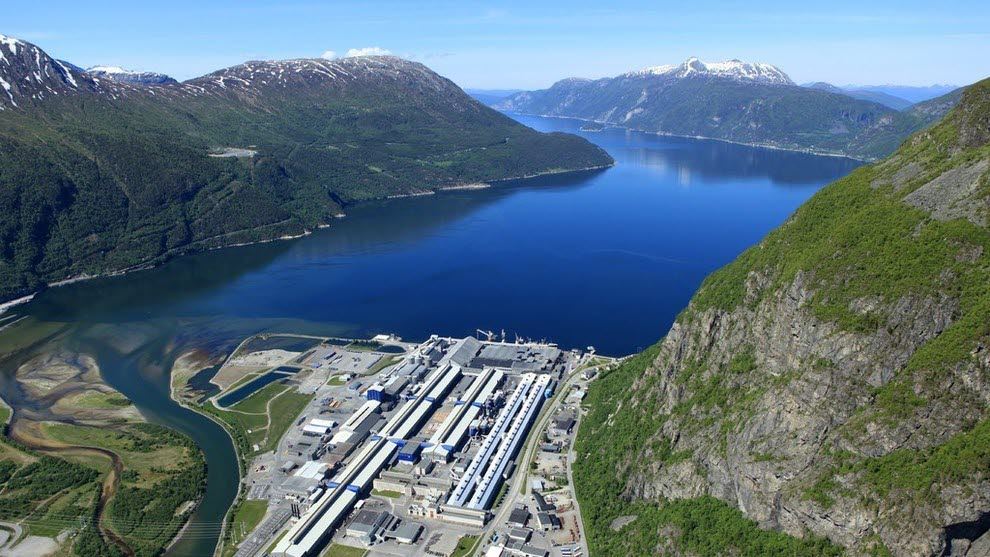Project aim
The aim of the project is to enhance our understanding of erosion and scale formation in pneumatic conveying systems and to develop a method for online monitoring of these two phenomena.
Industrial challenges
Erosion and scale formation can cause major challenges in process industry with handling of bulk solids, as explained by the following two examples from the metal and mineral industry.
In aluminium production, the main raw material, alumina, is converted to aluminium by smelting. In the first step, alumina passes through a dry-scrubber to remove fluoride emissions from aluminium smelters. The fluoride-enriched alumina is then fed into the smelters and converted to aluminium. Alumina is highly abrasive powder that can cause significant wear of equipment. On the other hand, the process equipment used for the fluoride-enriched alumina is often hampered by formation of scale, i.e., fouling of process equipment. This can have severe consequences for both the economic and environmental performance of the smelters.
In production of calcium carbonate products, some of the raw materials, especially dolomite and calcium carbonate with high content of hard mineral contamination like silica, are abrasive and their handling can cause frequent wear of conveying equipment. This leads to frequent shutdowns due to repair or exchange of pipeline elements and substantial maintenance costs. On the other hand, some of the raw materials handled, tend to deposit inside the pipelines. Large pieces of scale that detach from the surface of equipment can contaminate the finely granulated product, causing severe quality issues.
Research approach
The project is divided into two PhD studies, one focusing on erosion and the other on scale formation. In the study on erosion, we will use a sand-blast type erosion tester to carry out a series of experiments investigating erosion under different experimental settings (e.g., impact velocity, impact angle, temperature, particle size, particle concentration and exposure time) in a design of experiments. We will also investigate the use of acoustic sensors for online monitoring of erosion. In the study on scaling, we will evaluate different types of methods for online monitoring and the most promising candidates will be installed and tested during a test campaign in a full-scale industrial plant. During the test campaign, we will measure the scale-growth in a pneumatic conveying system and simultaneously collect other process data. A comprehensive multivariate data analysis will be performed to investigate correlations between the process variables and the scale growth.
Project objectives
- Increase understanding of erosion and scale formation in selected industrial processes
- Identify the most important variables and process conditions that have a significant influence on erosion and scale formation
- Develop and test online method for monitoring of scale formation and erosion
Project partners
The project is led by SINTEF Industry and the partners include the University of South-Eastern Norway, Hydro Aluminium, GE Power Norway, and Omya Hustadmarmor.
Funding
The project is funded by the Research Council of Norway via the BIA programme as a knowledge-building type of project and by the industrial partners.

Conference publications
- Ediriweera, M., Chladek, J., Ratnayake, C. Review of Impact Erosion of Pneumatic Transportation Pipelines, PGBSIA 2016, Jaipur, India.
- Haugland, I. B., Chladek, J., Halstensen, M. A Feasibility Study of Online Monitoring Techniques for Scale Deposition Thickness in Pneumatic Conveying Pipelines, PGBSIA 2016, Jaipur, India.
- Haugland, I. B., Halstensen M. Online Acoustic Chemometrics Monitoring of Scale Deposition Thickness in Pneumatic Conveying Systems: A Feasibility Study, RELPOWFLO V 2017, Skien, Norway.
- Haugland, I. B., Halstensen M. A Laser Technique for Obtaining Reference Measurements to Calibrate Scale Deposition Thickness Models for Pipelines, RELPOWFLO V 2017, Skien, Norway.
- Srivastava, A., K., Haugland, I. B., Ratnayake, C. A Short Review on Fouling/Scaling/Caking during Powder Processing Operations, RELPOWFLO V 2017, Skien, Norway.
- Ediriweera, M., Chladek, J., Ratnayake, C. Scientific Investigation of Particle Size on Erosive Wear by CaCO3, RELPOWFLO V 2017, Skien, Norway.
- Ediriweera, M., Chladek, J., Ratnayake, C. Multivariate Analysis of Impact Erosion by Dolomite Particles, CHoPS 2018, Greenwich Maritime Campus, London, UK.
- Haugland, I. B., Kjos, O., Røyset, A., Vullum, P. E., Aarhaug, T. A., Halstensen, M. Alumina Scale Composition and Growth Rate in Distribution Pipes, Light Metals 2019, 697-706.
- Haugland, I. B., Chladek, J., Halstensen M. Monitoring of Erosion in a Pneumatic Conveying System by Non-intrusive Acoustic Sensors – A Feasibility Study, SIMS 2019, Västerås, Sweden.
Journal publications
- Haugland, I. B., Chladek, J., Halstensen M. A feasibility study of real-time monitoring techniques for scale deposition thickness in pneumatic conveying pipelines, Particulate Science and Technology, 36 (4), 2018, 481-488.
- Haugland, I. B., Halstensen M. A Technique for Obtaining Reference Measurements to Calibrate Deposition Models for Pipelines, Chemical Engineering and Technology, 41 (8), 2018, 1538-1543.
- Haugland, I. B., Chladek, J., Halstensen M. Monitoring of scaling in dilute phase pneumatic conveying systems using non-intrusive acoustic sensors – A feasibility study, Advanced Powder Technology, 30 (8), 2019, 1634-1641.
- Haugland, I. B., Chladek, J., Halstensen M. Monitoring of scale formation in a pneumatic conveying system operating in a metal production plant, Powder Technology, 355, 2019, 135-144.
